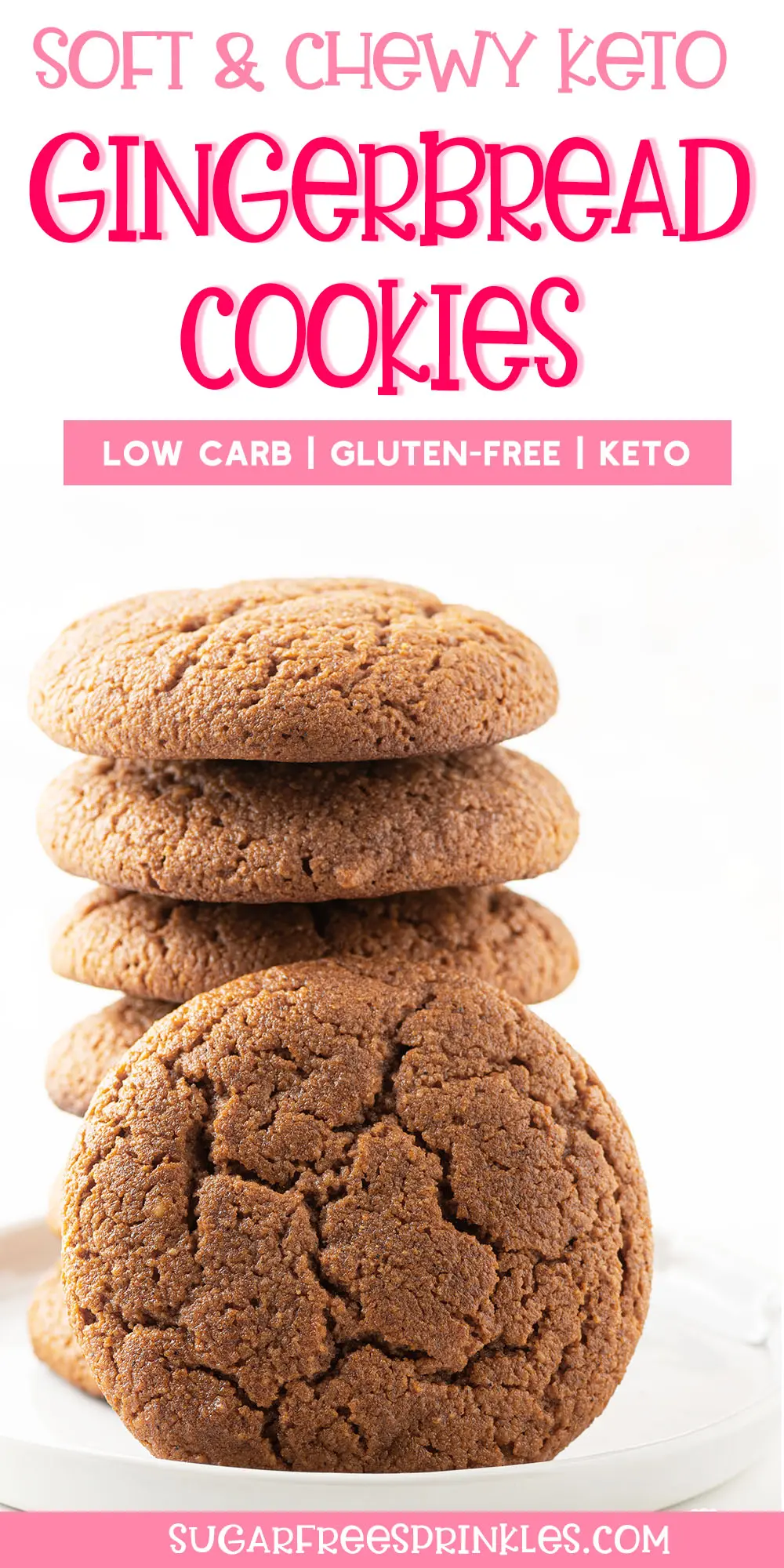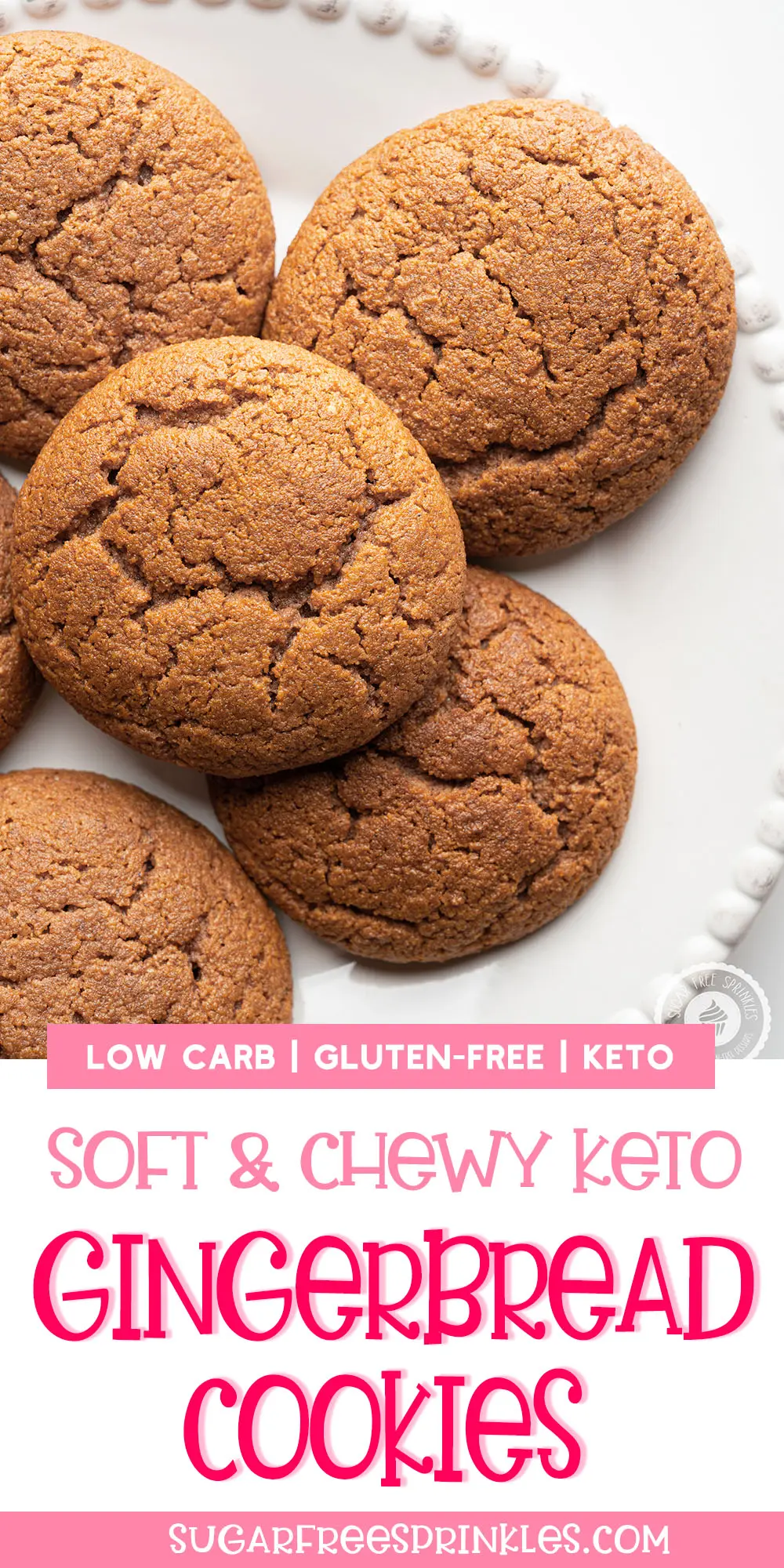COOKIES! My weakness, my ultimate weakness. Oh, how I love their chewy sweetness and superior pairing with a cup of hot coffee. COFFEE! My other weakness… lol. You will have to excuse the rhetoric I’ve been baking nonstop for what feels like days, but I am super excited today to have finally mastered these soft keto gingerbread cookies.
I’m slightly loopy on the smells of fall because my whole house smells like one of those fall Yankee candles right now. That’s not a complaint, it’s seriously awesome.
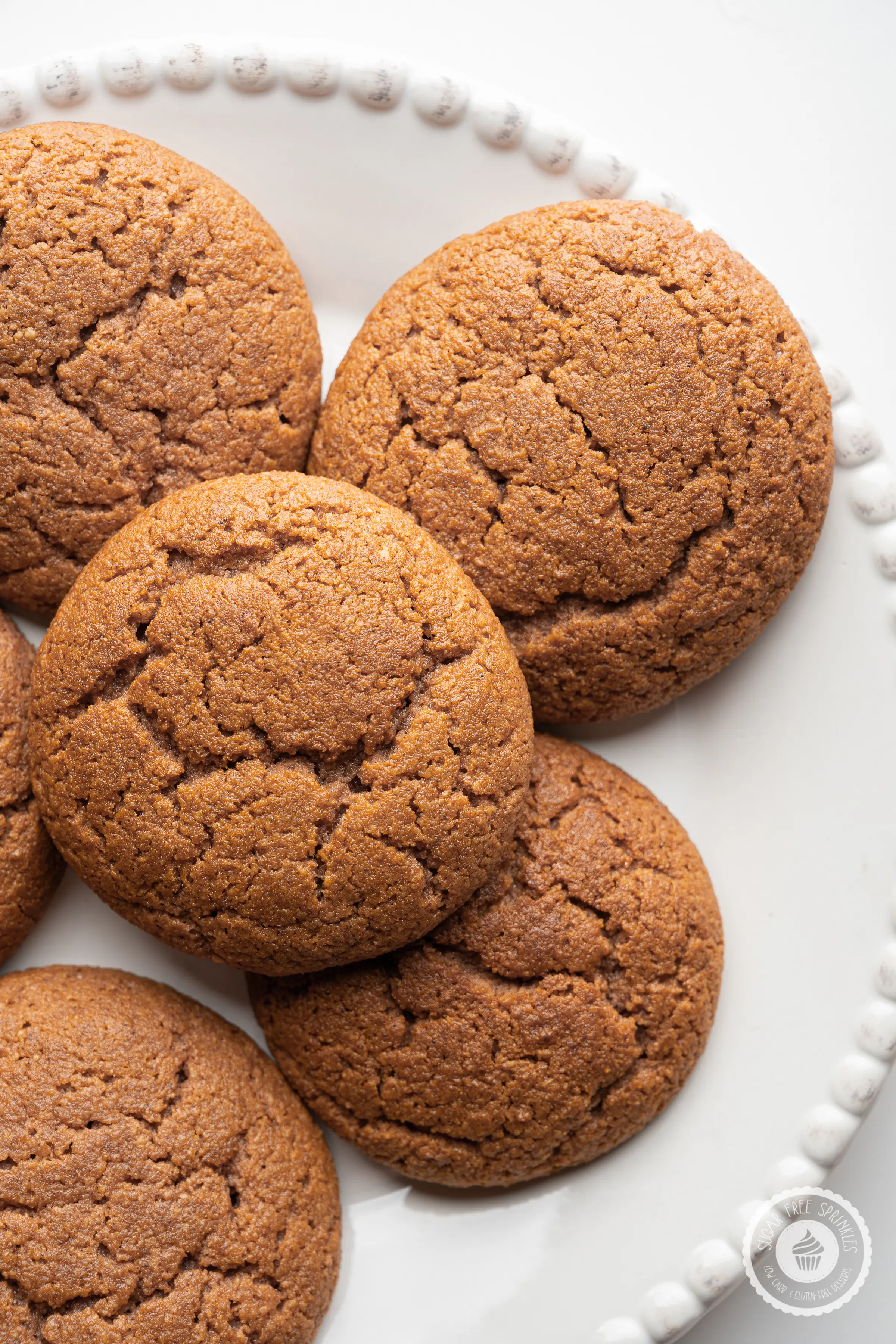
Low Carb Gingerbread Cookies With A Perfect Spice Blend
I had a few very important texture requirement for these cookies. They had to be soft, but they also had to be slightly chewy. Check check on both points.
They also had to have the right spice blend and try to make up for the fact that they didn’t have any molasses. Check on that point too. You don’t miss the molasses, I promise!
These keto gingerbread cookies have a few great qualities going for them:
- Chewy & soft like a soft gingerbread cookie should be.
- Sweet, and spicy with a good level of heat from the ginger & cloves.
- One bowl recipe!
- Keto & Low Carb.
- Entirely Gluten and refined sugar-free.
- 30 minutes including baking time.
- Perfect for the Holiday Season!
Related: Gingerbread cookies are one of those fall flavors that I just love. For another fall favorite, check out my cheesecake-stuffed pumpkin loaf!
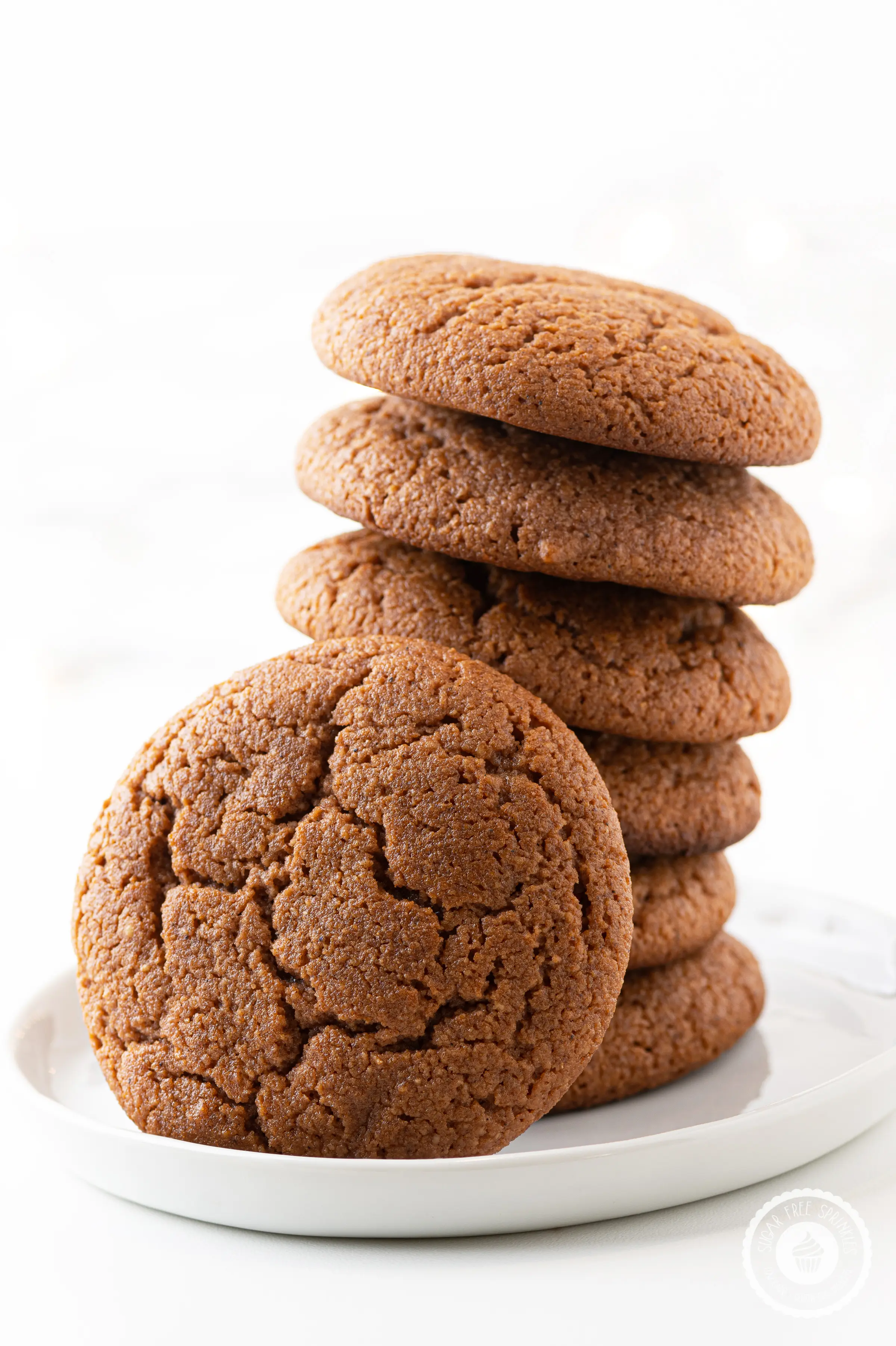
What sweetener work best in this recipe
~This post may contain affiliate links. If you click one and make a purchase, I may receive a commission at no additional cost to you. I only ever recommend the ingredients or tools I use for my recipes. You can read more about our disclosure policy here ~
Ok, so I have been spending a lot of time lately working primarily with Allulose in my low-carb recipes. This recipe is no break from that trend! Allulose creates the perfect texture in these cookies. The sweetener creates that sticky chewy inside texture.
With that said you can use erythritol, or monk fruit sweetener, or even a blend of granular sweeteners, just know that the texture will be different. If you use sugar alcohols your cookies will also harden considerably overnight. You may like this texture, but if you want to keep the cookies soft, go with the Allulose.
Answers about Sweeteners, Low Carb Baking Tips, and General FAQ
For more detailed information about must-have baking tools and answers about sugar replacements, you can check out these FAQ pages.
We also have a handy sweetener replacement chart you can download for free!
Our FAQ Pages have answers to your biggest low carb baking questions including:
Tips for Baking With Almond Flour
Tips for Baking with Coconut Flour
Guides for Allulose, Monk Fruit, and Erythritol.
Substitutes for Xanthan Gum.
Cookie Batter Tips To Get Perfect Cookies Every Single Time
To create the best ever keto gingerbread cookies there are a few steps you need to follow. This recipe creates a very soft dough that needs to be refrigerated for at least an hour (or overnight).
- Cream the butter, cream cheese, and allulose until very light and fluffy.
- Add the egg and heavy cream and whip until blended.
- Add the dry ingredients and blend together until the cookie dough starts to come together. The dough will be soft and very sticky.
- Wrap the dough in saran wrap and place the dough ball into the fridge for an hour or overnight. Overnight helps the spices develop and give the cookie an all over better flavor, but if you are impatient (like I am) an hour will do the trick!

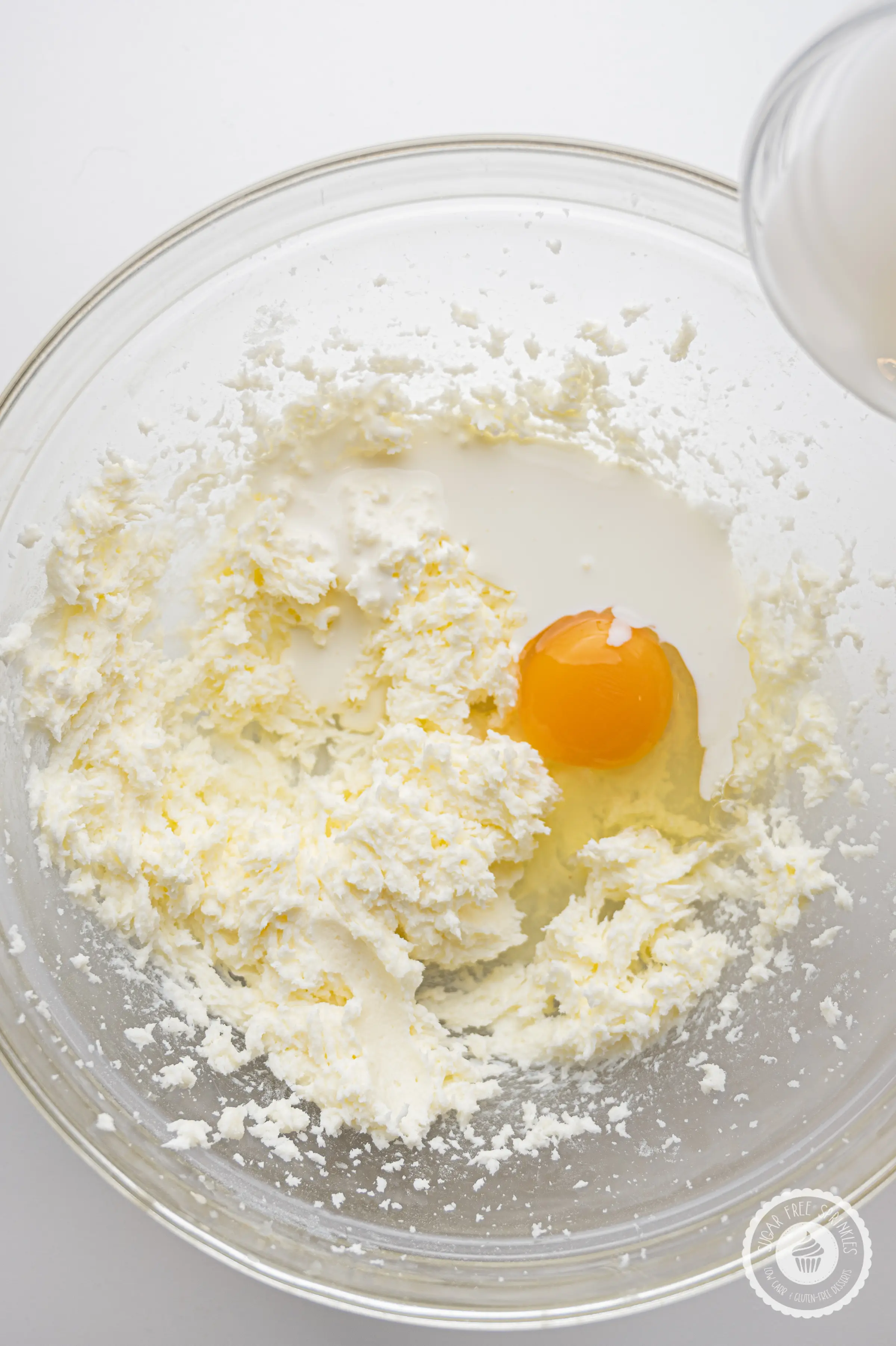

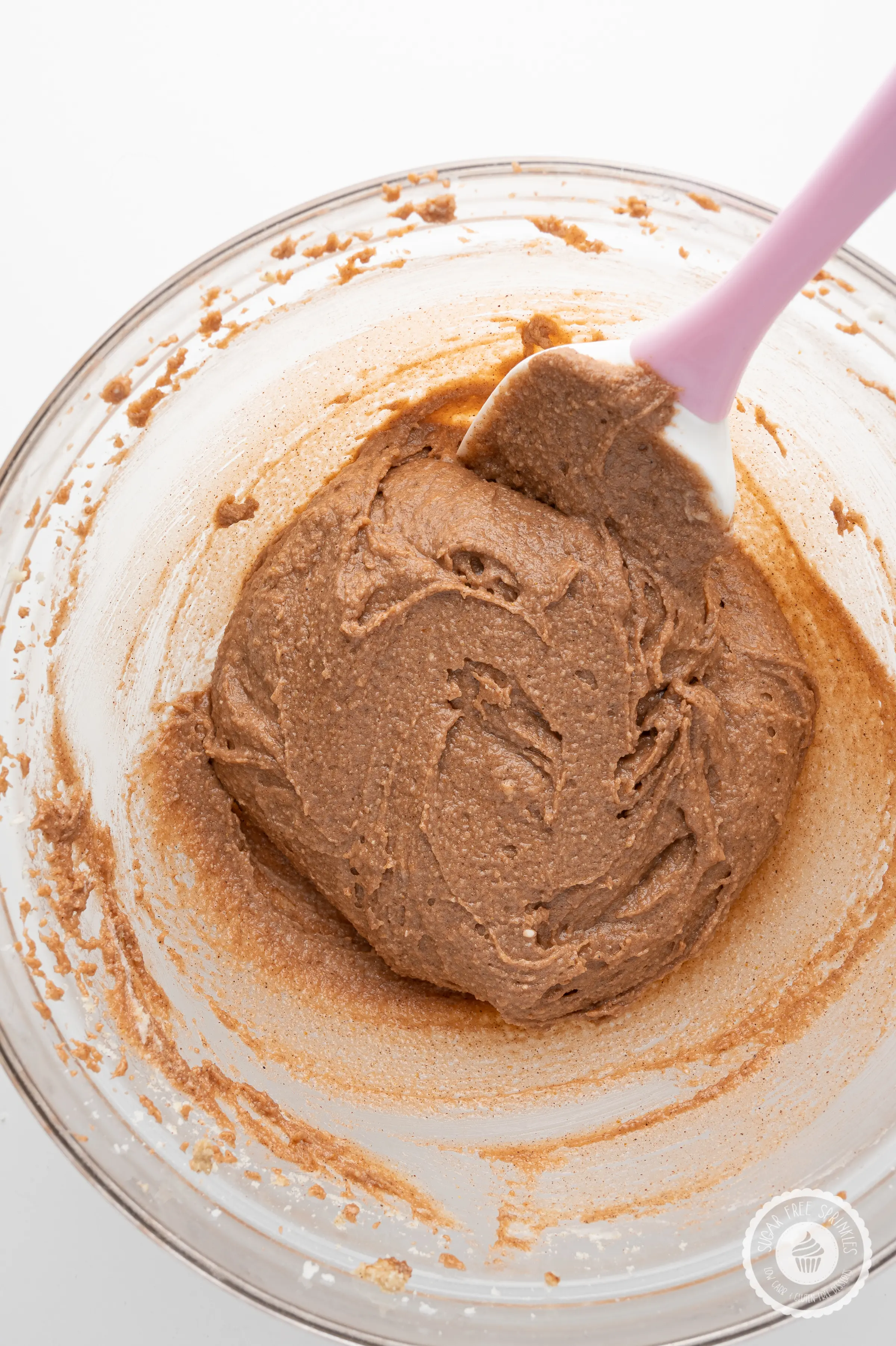
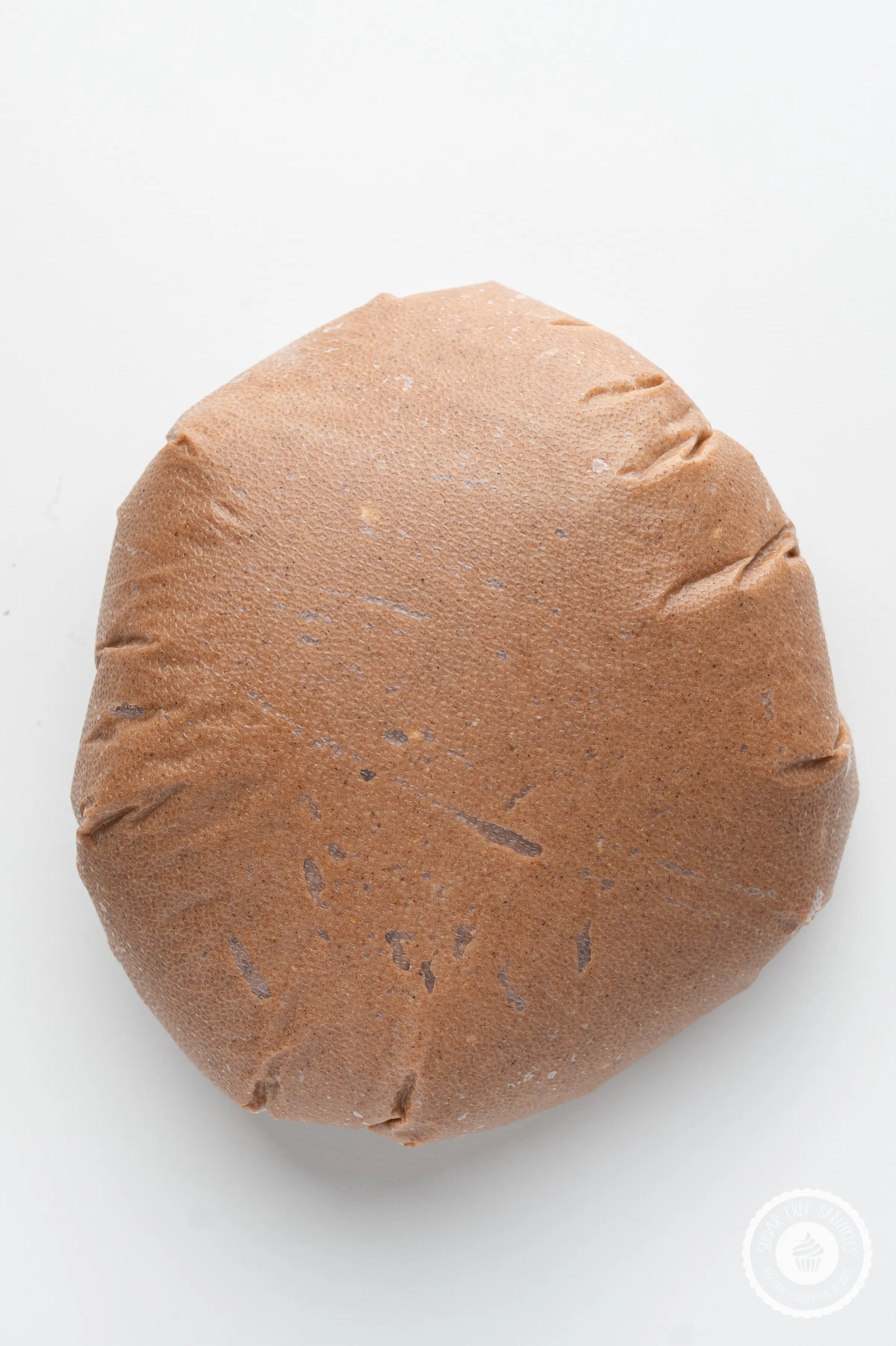
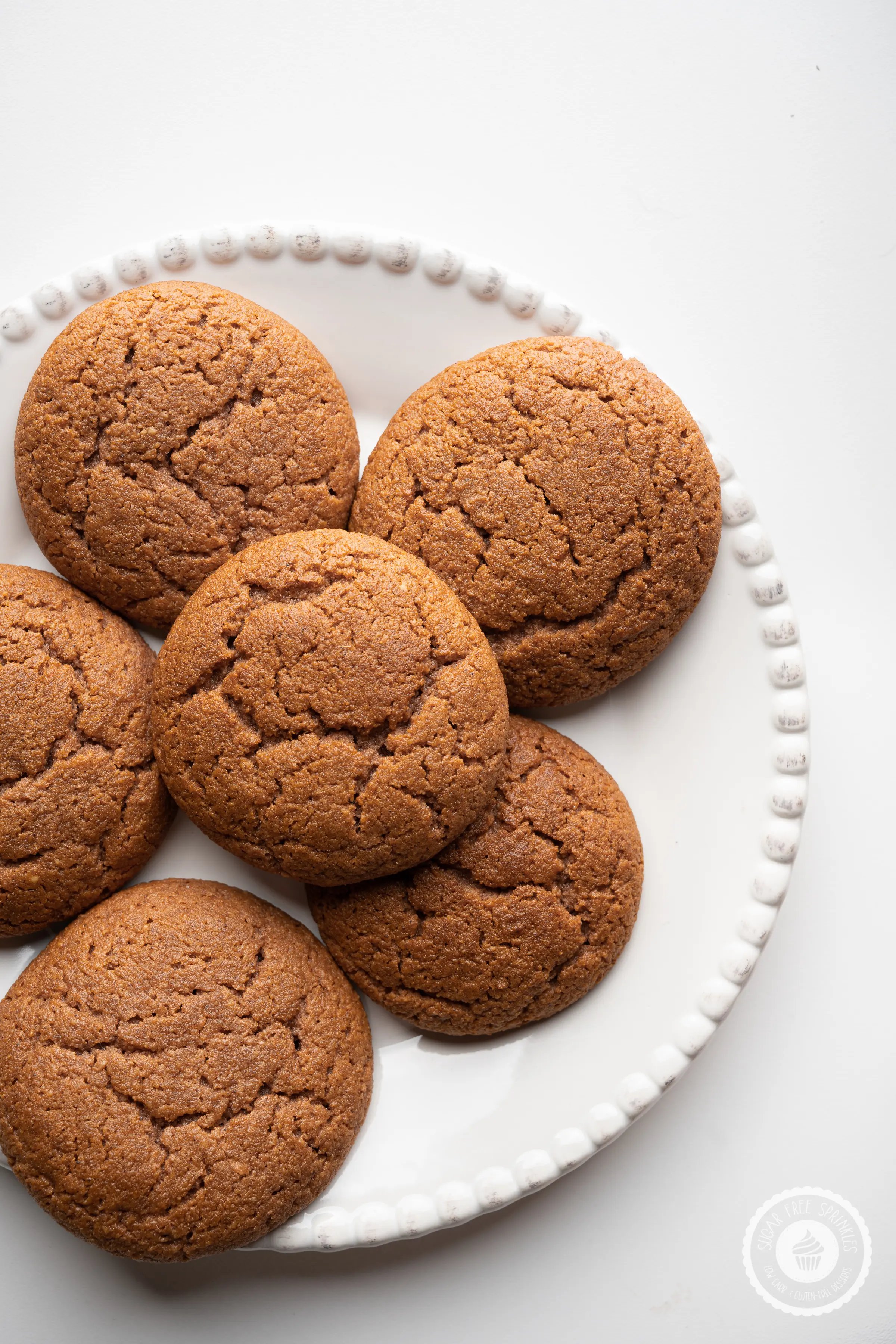
Very Important Baking Tips for the Best Keto Gingerbread Cookies!
There are three important tips that should not be skipped for this recipe to come out perfect every single time.
- Roll the gingerbread dough and do not flatten. They flatten (when baked) into perfect looking gingerbread cookies complete with the cracks if you roll them into balls. The dough is going to be soft and sticky. If you wet your hands before you start to roll, the dough will not stick.
- Give the cookies lots of room to spread. On a quarter sheet line with pieces of parchment paper, I placed 6 cookies.
- Double your cookie sheet. I mean place another cookie sheet under your primary sheet before placing it into the oven. This is very important when baking with low carb ingredients, as it prevents the almond flour and allulose from over-browning (see the final image below). It makes a world of difference. If you do not have a second cookie sheet, wrapping the bottom of the baking tray in tin foil will help a lot.
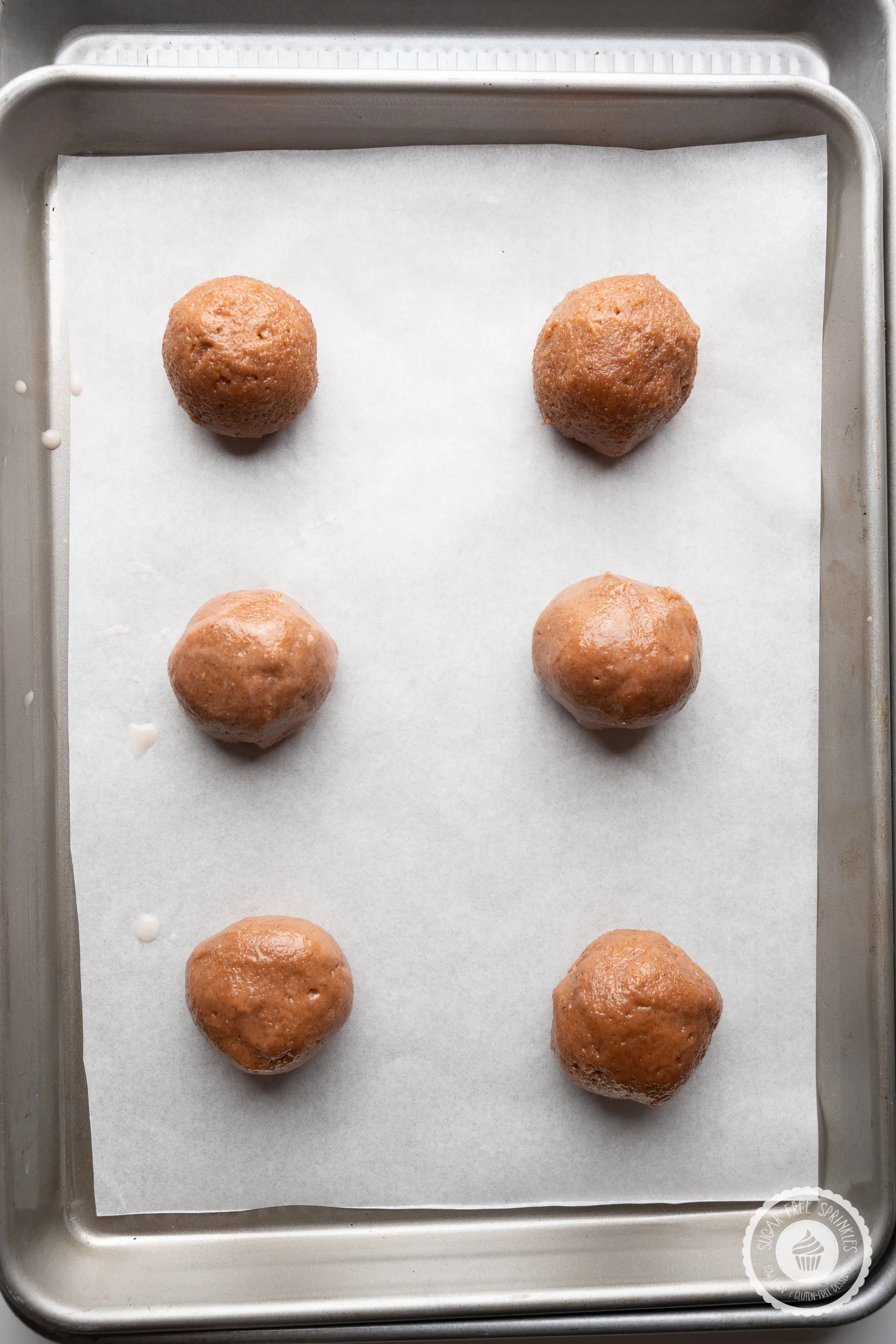


Serving & Storage Suggestions
These are great 10-15 minutes directly out of the oven when they are still warm and fresh. They store great, covered, at room temperature for up three days. After three days they lose their freshness.
These keto gingerbread cookies, and the cookie dough freezes GREAT! You can make either and store them in the freezer.
You can roll your balls, and freeze them on a cookie sheet, and then store them in a freezer bag or airtight container for up to a month. Be sure to let the frozen cookie dough balls defrost before baking.
You can glaze these cookies, add a cream cheese frosting, or even serve one with low carb ice cream. We sliced ours in half and made gingerbread ice cream sandwiches, and yes, they were as good as they sound!
Editorial Note: This recipe was originally published on September 29, 2020, and was updated on February 24, 2022.
Looking for More low carb/ Keto Cookie Recipes?
Looking for more inspiration for keto recipes? Gluten free recipes? We got ya covered!
- Vanilla Sugar Cookies
- Easy Keto Chocolate Chip Cookies – Soft, Chewy, and Amazing!
- Pumpkin Spice Cookies
- Fun Halloween Monster Cookies!
- Keto Whoopie Pies With Marshmallow Filling
- Keto Lemon Cookie Recipe With Lemon Chocolate Glaze
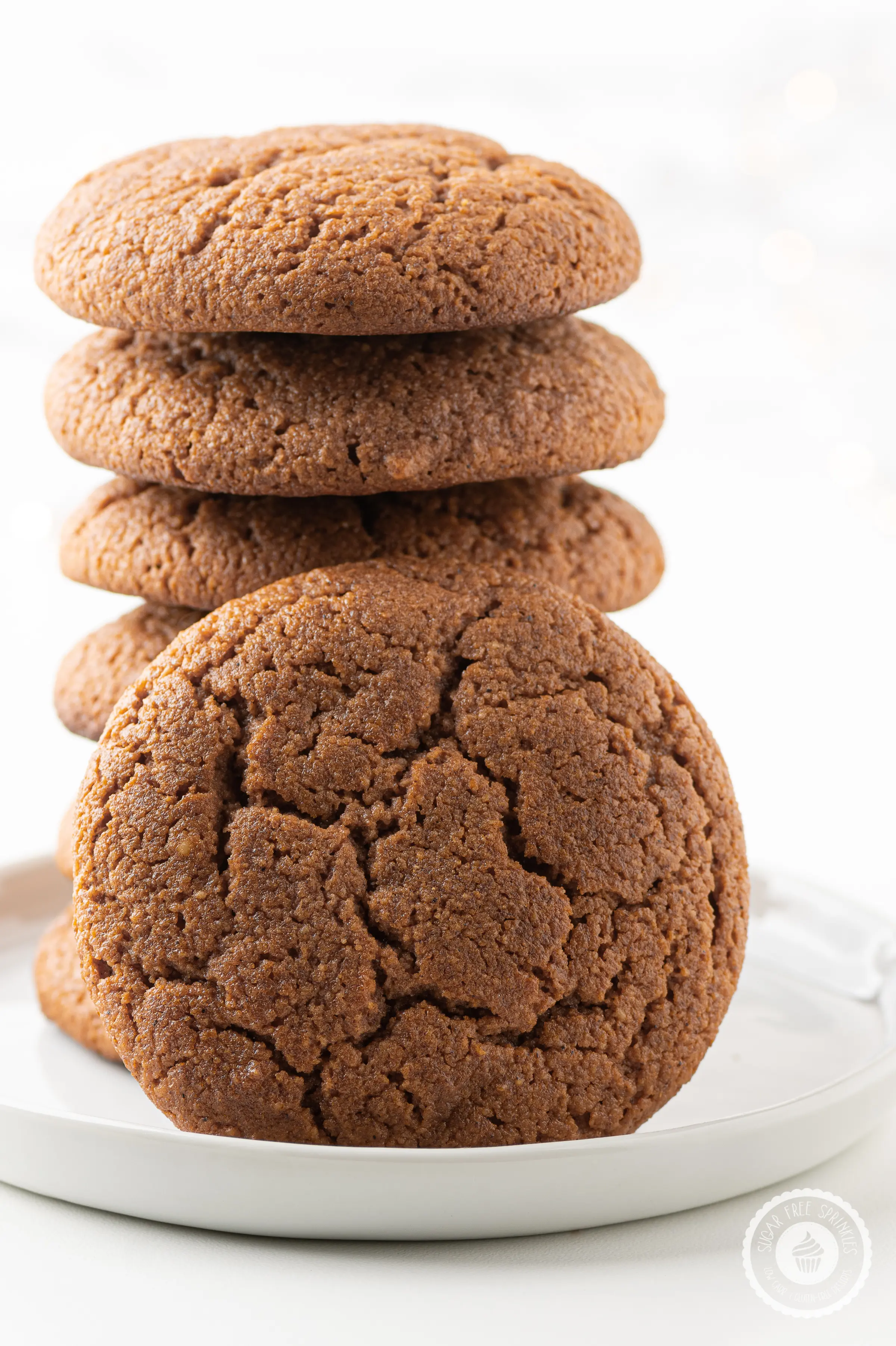

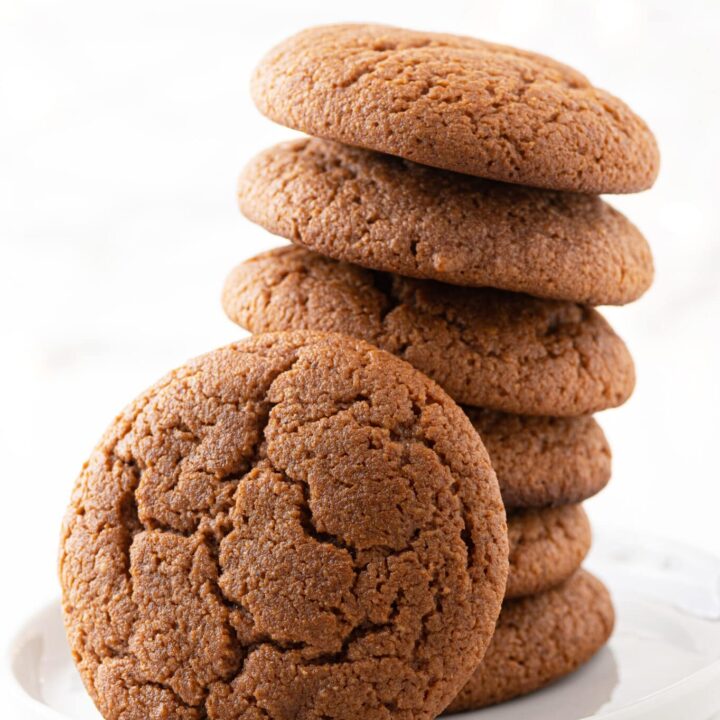
Soft Keto Gingerbread Cookie Recipe
Soft and Chewy Keto Gingerbread cookies with a hot ginger kick!
Ingredients
- 1/4 cup unsalted butter softened
- 1/4 cup full-fat cream cheese softened
- 2/3 cup granular allulose * see notes in post for substitutions
- 1 large egg
- 1/4 cup heavy whipping cream
- 1 1/3 cup sifted fine almond flour
- 1/3 cup sifted coconut flour
- 2 Tbsp unflavored protein powder
- 1 tsp baking powder
- 1/4 tsp salt
- 1 Tbsp cinnamon
- 1/2 Tbsp ground ginger
- 1/4 tsp cloves
Instructions
- Sift almond flour, coconut flour, baking powder, protein powder, salt, and spices into a large mixing bowl.
- In the bowl of a stand mixer, or in a large bowl with a hand mixer (electric mixer), blend cream cheese, butter, and allulose until well blended, light and fluffy.
- Add the egg and heavy cream and blend until creamy.
- Fold dry ingredients into wet ingredients until everything is blended and the dough pulls together. The dough will be soft.
- Cover with plastic wrap and chill for at least one hour.
- Preheat oven to 350F and prepare a cookie sheet with large sheets of parchment paper. Double up your baking sheet. (see notes in post for baking tips)
- Roll heaping tablespoons onto the cookie sheet. Do not press down.
- Bake for 15-17 minutes or until the cookies turn golden around the edges.
- Pull the cookie tray from the oven and allow the cookies to cool for at least 5 minutes before removing from the tray.
- Place the cookies on a cooling rack until fully cooled.
Notes
- Be sure to chill the dough prior to baking
- Roll the dough and do not flatten. They flatten when baked into perfect looking gingerbread cookies complete with the cracks if you roll them into balls. The dough is going to be soft and sticky. If you wet your hands before you start to roll, the dough will not stick.
- Give the cookies lots of room to spread. On a parchment-lined quarter sheet, I placed 6 cookies.
- Double your cookie sheet. I mean place another cookie sheet under your primary sheet before placing it into the oven. This prevents the almond flour and allulose from over-browning (see the final image below). It makes a world of difference. If you do not have a second cookie sheet, wrapping the bottom of the pan in tin foil will help a lot.
Recommended Products
As an Amazon Associate and member of other affiliate programs, I earn from qualifying purchases.
Nutrition Information:
Yield: 10 Serving Size: 1Amount Per Serving: Calories: 167Total Fat: 15gSaturated Fat: 6gTrans Fat: 0gUnsaturated Fat: 8gCholesterol: 44mgSodium: 140mgCarbohydrates: 4gFiber: 2gSugar: 1gProtein: 6g
Nutritional information for the recipe is provided as a courtesy and is approximate only. We cannot guarantee the accuracy of the nutritional information given for any recipe on this site. Erythritol carbs (and sugar alcohols) are not included in carb counts as it has been shown not to impact blood sugar. Net carbs are the total carbs minus fibre.
